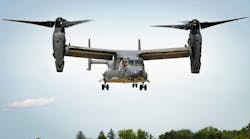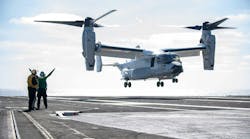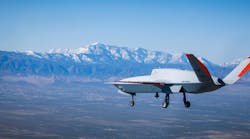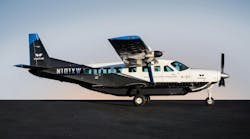Feb. 25--A huge chunk of work at Hill Air Force Base may be in jeopardy if Defense Secretary Chuck Hagel's proposed five-year Pentagon budget becomes a reality.
The budget calls for the retirement of older weapons systems within the Air Force, which include the A-10 attack aircraft and the U-2 spy plane.
The Defense Department's weapons buying request for 2015 will be about $91 billion, or $15.2 billion less than the $106.2 billion estimated last year. And $64 billion for research and development, or $8.8 billion less than forecast, according to internal budget figures provided by a defense official.
The Air Force will get to continue developing a new bomber and a refueling tanker aircraft as well as the F-35 Joint Strike Fighter. The service will also seek $1 billion to design a new jet-engine technology that will produce "sizable cost- savings," Hagel said.
If automatic budget cuts resume in 2016, the Air Force would have to retire its entire fleet of KC-10 tankers, buy fewer F-35 jets and sustain 10 fewer Predator and Reaper drone patrols, Hagel said.
To pay for the programs and the new engine, the Air Force will shrink the size of its tactical air squadrons and completely eliminate its A-10 attack airplane fleet to save $3.5 billion over five years, Hagel said. The move would let the Air Force concentrate its resources on the F-35 made by Lockheed Martin.
The A-10, known as the Warthog, was built by Fairchild Republic and has been upgraded by Chicago-based Boeing, Falls Church, Va.-based Northrop Grumman and Bethesda, Md.-based Lockheed.
Hill has provided maintenance and support for the Warthog for years.
Just two years ago, the base was tasked to replace wings on 233 A-10s through 2018 as part of the DoD's plan to keep the plane flying until 2040.
Boeing produces the wing sets at the company's production facility in Macon, Ga., then they deliver the wings to the Ogden Air Logistics Complex at Hill.
Hill's 309th Maintenance Wing replaces the wing in a process that takes five to six months.
The Air Force also will retire its fleet of 50-year-old U-2 spy planes in favor of Global Hawk surveillance drones made by Northrop Grumman, Hagel said.
The Defense Secretary's plan met immediate resistance from Utah Republican Congressman Rob Bishop on Monday.
"(Savings) will not be found by cutting the Air Force's A-10 fleet," Bishop said in a statement. "This proposed budget would inflict more pain on our troops and military capabilities while other areas of federal spending, such as entitlements, seem to continue to grow unchecked."
Hagel's plan would also reduce the Army by 6 percent to about 490,000 personnel by 2015 from about 522,000 today, accelerating by two years the Army's plan to reach that total by 2017. Hagel's proposal also calls for reductions to about 450,000 by 2019 -- 30,000 fewer than the active-duty force in September 2001 before the terrorist attacks on the U.S.
For the five-years ending in 2019, the Defense Department's budget forecast includes $115 billion more in spending than currently authorized in congressionally mandated levels under the budget cuts called sequestration.
The plan calls for requesting $535 billion in 2016, or $35 billion more than the sequestration level; $544 billion for 2017, or $31 billion over the cap; $551 billion in 2018, or $27 billion over the cap and $559 billion in 2019 or $22 billion over the cap.
___
Contact reporter Mitch Shaw at 801-625-4233 or [email protected]. Follow him on Twitter at @mitchshaw23.
___
The Associated Press also contributed to this report.
Copyright 2014 - Standard-Examiner, Ogden, Utah




